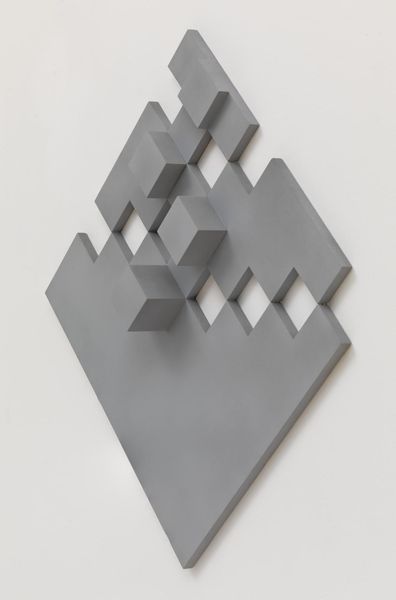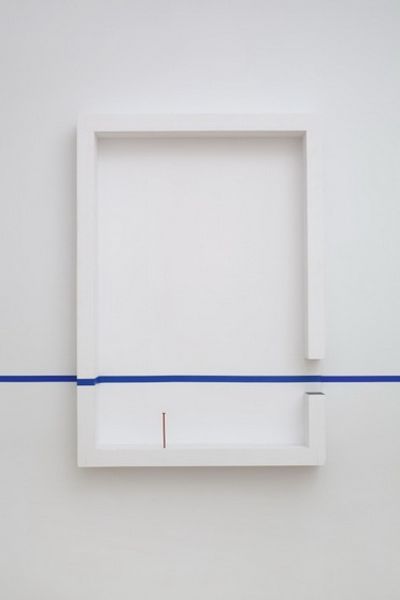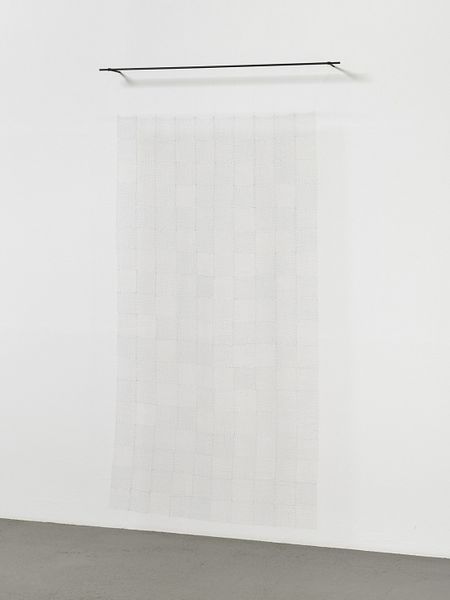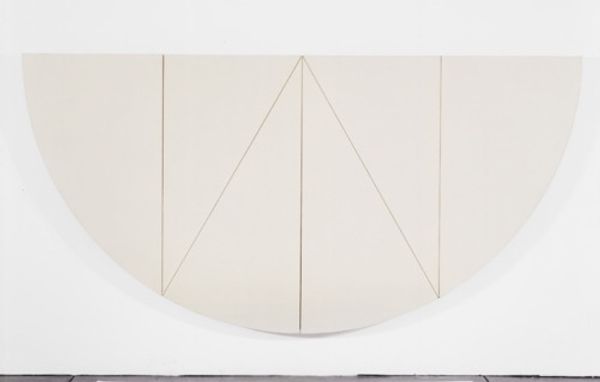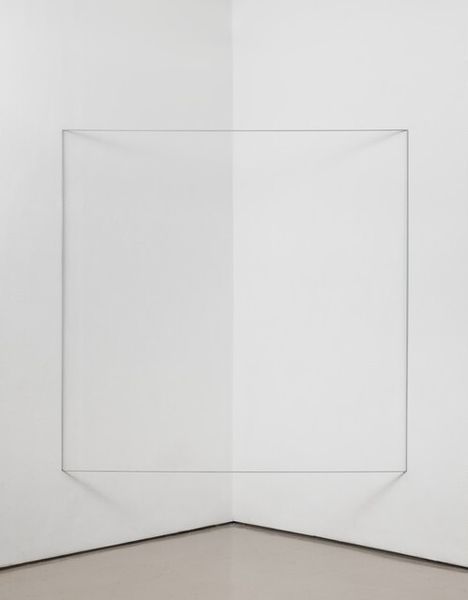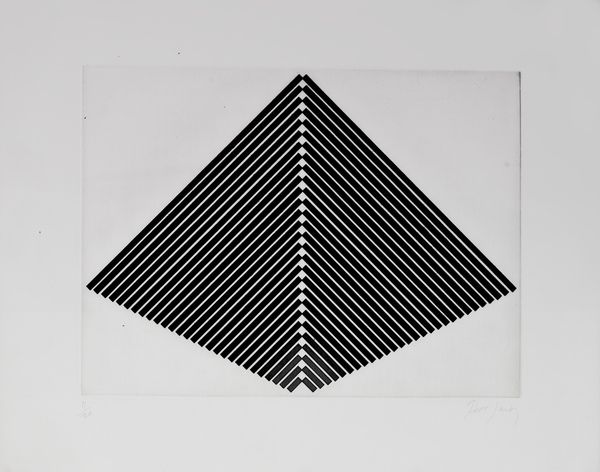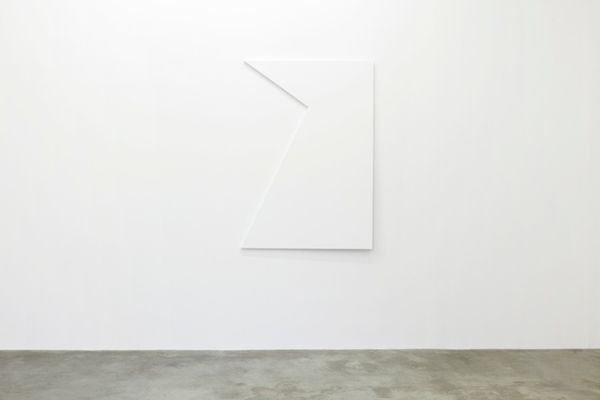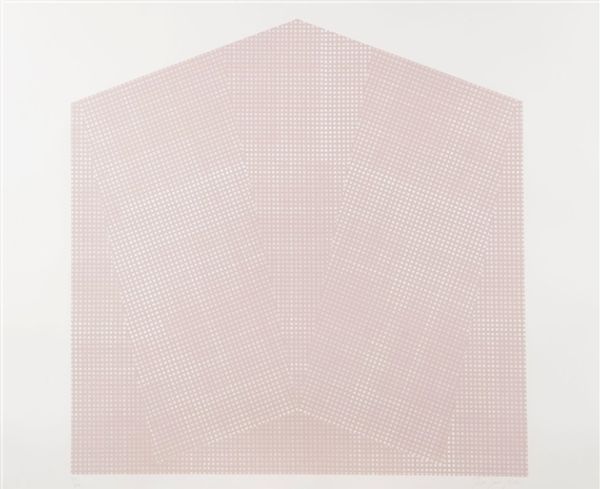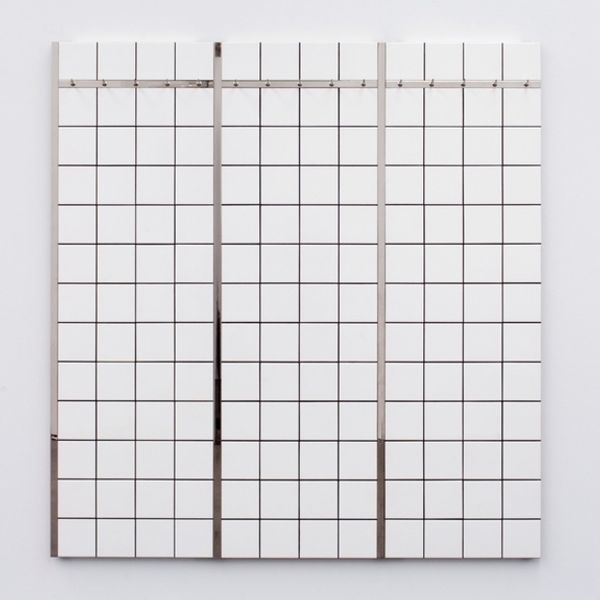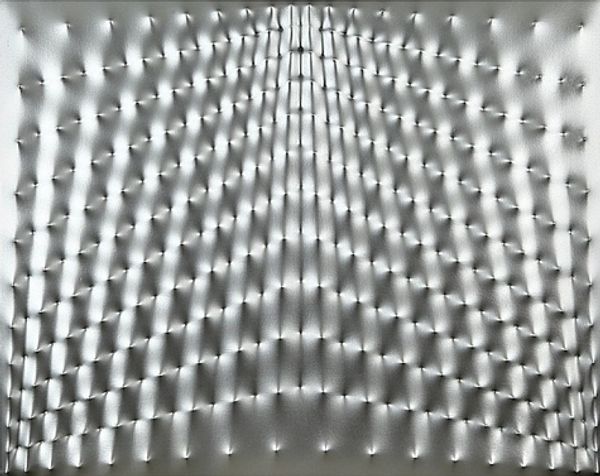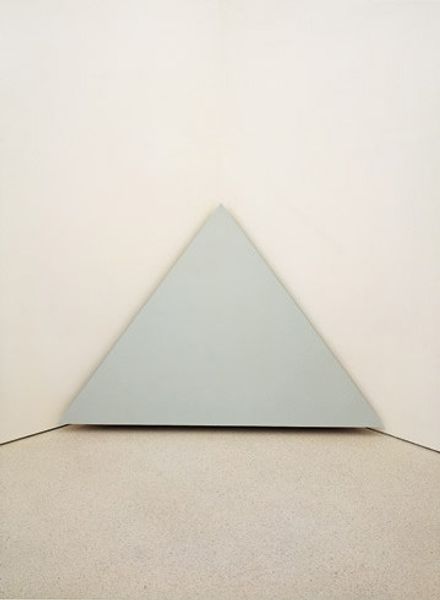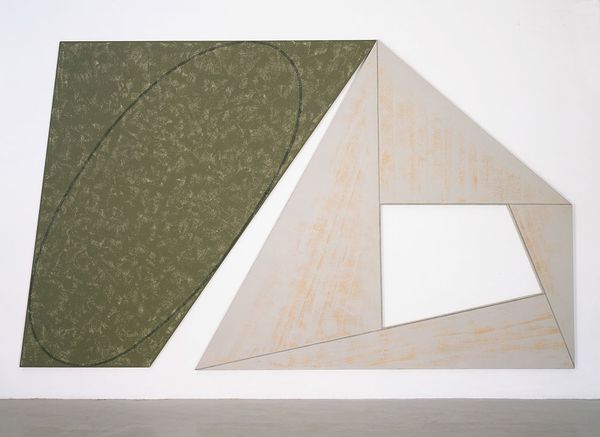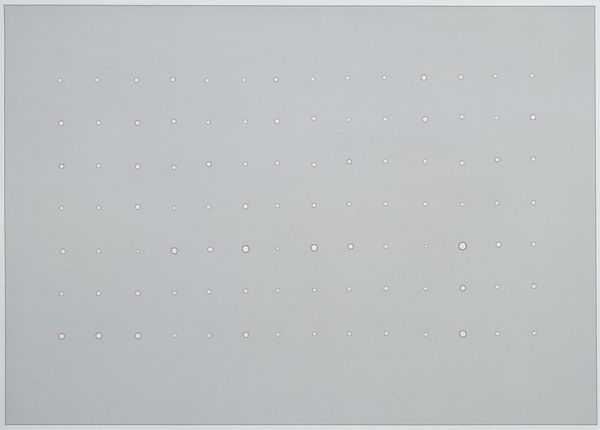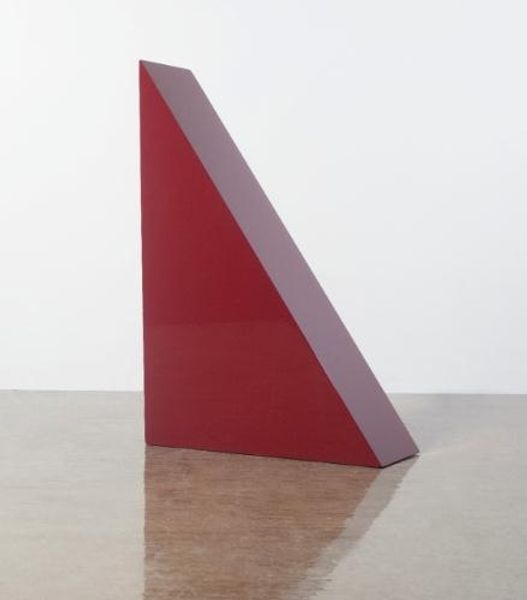
#
print print-like
#
reduced colours
#
tactile
#
pattern
#
minimal typography
#
high angle
#
angled
#
chalky texture
#
line
#
soft and bright colour
#
artificial colours
#
zig zag
Copyright: Heimo Zobernig,Fair Use
Editor: Here we have Heimo Zobernig's "Ohne Titel (HZ 2004-033)" from 2004. It’s a geometric abstraction, very grid-like and tactile. It is visually quite subtle but impactful in scale. What do you see in this piece that I might be missing? Curator: Well, its use of repeated geometric forms immediately directs my attention to its means of production. The work prompts us to consider what materials went into this. Was it meticulously hand-painted, printed, or perhaps even stenciled? The texture also brings up thoughts of the surface quality of consumer goods: laminate tabletops, or tiled surfaces. Editor: That’s a really interesting reading, focusing on industrial or perhaps mundane materials! I was more stuck on the composition. Does the almost clinical nature of the pattern hint at something deeper, or is it all just surface? Curator: Precisely, it's that tension between “surface” and depth that fascinates me. By presenting us with a pattern reminiscent of mass-produced items, Zobernig blurs the lines between high art and the design of everyday objects. Editor: So you're suggesting that by focusing on process and materiality, he’s making us question the value we place on originality and the artist's hand? Curator: Exactly. It prompts us to examine the labor involved in creating these repetitive forms, whether it’s the artist or a machine producing them. Consider the social context: Is Zobernig commenting on mass production, the accessibility of art, or our increasing consumption of patterns and surfaces in a commercial context? Editor: I never would have considered that without you spelling it out! I was so focused on the visual aspect that I missed the potential commentary on labor and consumption. Curator: It's about shifting perspective. By considering the materials and processes, the conversation shifts. It certainly makes you think about how and why things are made, right? Editor: Definitely. I’ll never look at a simple pattern the same way again.
Comments
No comments
Be the first to comment and join the conversation on the ultimate creative platform.
